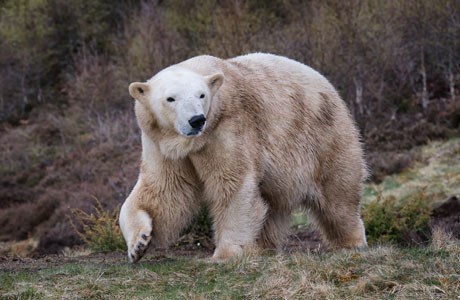It is just one polar star for the Highlands.
For hopes of twin polar bears – the first in the UK for 25 years – appear to have been dashed.
Keepers at the Royal Zoological Society of Scotland (RZSS) Highland Wildlife Park at Kincraig have revealed that over the past two months they have only detected the voice of one cub.
Mother Victoria gave birth at the park just before Christmas.
Polar bears usually give birth to twins, but the young – which are only the size of a guinea pig when born – remain out of sight until they emerge from the birth den around March.
Over the past two months staff have carefully monitored the calls of the offspring and can only detect once voice pattern.
In a joint blog, the park’s top carnivore keepers Vickie Larkin and Una Richardson said:”The first few weeks and months are always a sensitive time but we have now passed the 30-day mark which is really encouraging and with each passing day we are more hopeful of the best possible news when Victoria emerges from her maternity den.
“Victoria needs peace and quiet at the moment to ensure she looks after her cub as well as she can, so we intrude as little as possible.
“Only one member of our keeping staff whom Victoria is familiar with can visit her area each day to check her water (which can freeze during our harsh winter weather) and change the batteries on a Dictaphone we use to record her cub’s vocalisations.
“Sometimes we are lucky enough to hear the cub ourselves, though much of their time at this age is spent sleeping.
“We are frequently asked questions such as ‘How many cubs do we think she has?’ and ‘What sex are they?’
“By monitoring our recordings and the sounds we have heard, we can only distinguish one cub so we are assuming she hasn’t had more. If she has had only one cub we will be absolutely delighted – we just want them to be healthy.
“Cubs can emerge from their dens at around three months of age and it will be at some point after this that we’ll know the gender. We also try to let our animals rear their young with as little interference as possible.
“Although we have passed the first month stage, this remains an anxious time for us, as polar bear cubs can have a high mortality rate both in captivity and in the wild. But we certainly can’t help getting a rush of excitement every time we hear the cub’s noise and we get a day closer to finally meeting our special arrival.”
